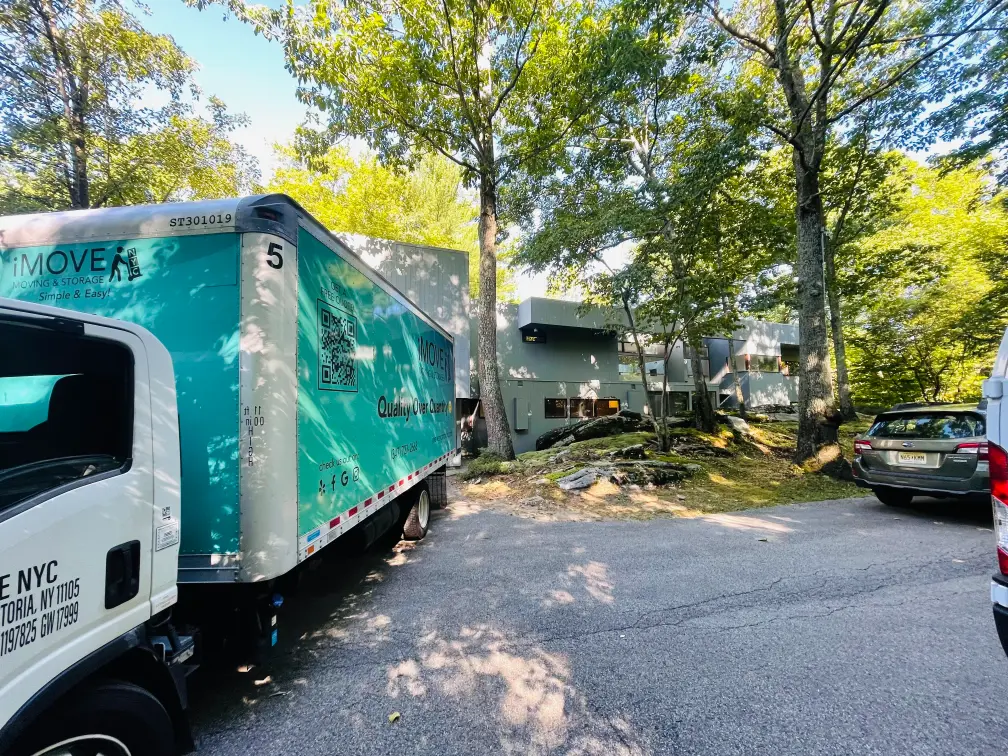A lot of people live with pets and consider them family members. We can understand that, with time you create a special bond when you care for someone, and soon enough your life without them seems unimaginable. In most cases, people get attached to their cats, dogs, birds, and even squirrels are a common choice for a pet. But what about fish? Do people get attached to their fish tanks? Well, yes, there are a lot of fish enthusiasts that can’t go a day without their beloved little friends.
So what do they do when it comes to moving a fish tank? To learn how hard it can be and how can you do it properly read the article until the end.
How Hard Is Moving A Fish Tank?
Did you know that each fish requires special treatment? Also, you’ll want to transport the fish tank that is already cleaned up and without cracks in the glass. So as you can see you need help with this. In this step-by-step guide, you will learn how to move a fish tank safely. There might be some additional steps involved in case you have live coral, tropical fish, or a heated tank.
However, no matter what type of tank and fish you have there are always three main steps:
- Prepping;
- Removing the fish and equipment from the tank;
- Moving empty fish tank.
Prepping
To move a fish tank safely, you must empty it first. You’ll need to detach all the electrical cords and remove all the fish, rocks, gravel, and plants. You’ll need to prepare the following supplies to successfully empty your aquarium.
- Fishnet – Use this tool to remove the fish, live corals, or plants;
- Siphon hose – The hose will allow you to transfer water from the tank to the buckets;
- Large buckets and plastic bags – When you fish out the fish, coral, and plants you need to place them somewhere else. If your moving destination is less than an hour away and your fish is small fish you can use plastic bags for transportation. Distant destinations and larger fish require at least five-gallon buckets with lids. If you know some different species can’t withstand sharing small spaces use different buckets. Also, use separate buckets for live plants and corals;
- Packing supplies – Closing the lid on the bucket is not safe enough, you need to tape it down to secure it properly. Also, you will need card boxes for fish tank equipment, and decorations, as well for the fish tank depending on the size.
Removing the fish and equipment from the tank
After you gathered all the equipment in one place it is time to prepare your fish for traveling make sure you do this as carefully as you can since moving will be very stressful for them.
Step 1 – Turn off and remove filters and equipment
Fish can become very stressed from moving. In the grand scheme of your move, plan to move the fish tank last and plan to set up the tank first in your new place.
First, stop feeding your fish 24 hours before the move, which helps keep their transport containers cleaner during the move. Remember to feed them again on schedule once the tank is set up.
Next, photograph your current fish tank setup, so you remember where all the equipment was positioned. Then turn off and remove any additional equipment you have like a filter, pump, fan, or heater. Keep filters damp and pack all the equipment in its original packaging if possible.
Step 2 – Siphon the water from the aquarium
Don’t move fish hours before you plan to move the tank. Try to minimize the time they spend in containers in any way possible. However, keeping the fish in the tank while you remove other items is a mistake. Remove the fish before you disturb the rest of the tank to minimize stress.
Before moving the fish, you want to create an environment in the moving container that is as close to the tank as possible. With a siphon, fill up the fish containers with a little bit of tank water.
Next, move the fish carefully into the buckets with a fishnet. Fill the remainder of the container accordingly depending on how many fish are in each and leave plenty of air at the top. You can fit a few smaller fish that get along into each five-gallon bucket.
Step 3 – Remove the remaining equipment
The only other items that will require special care are live plants and coral. Before moving these items, use the fishnet to remove any large rocks or decorations that you can dry off and pack separately. Next, submerge the coral and plants in their bucket with fish tank water.
Step 4 – Siphon and save the remaining original tank water
To streamline the move, you’ll want to save as much of the original tank water as possible. This step is crucial for saltwater fish tanks since water prep can be time-consuming. If you cannot preserve enough water to refill the tank, take the proper steps to prepare water, and put the prepared water in another five-gallon bucket. It might take 24-48 hours for new water to be ready for the tank, so be sure to do this in advance and have extra on hand just in case you need it.
Step 5 – Remove gravel
Once you get all the water and accessories out of the tank, remove the sand and gravel and give it a good rinse, and pat down. Store this separately with the “dry” items and remember to label everything.
Moving the empty aquarium
Step 6 – Pack the fish tank inside a cardboard box
Fish tanks are extremely fragile, and one wrong move can damage the glass or seams beyond repair, so proceed with caution.
First, take your time to thoroughly clean and dry the existing tank once it is empty. Pack the lid separately by wrapping it in bubble wrap.
Cut a piece of foam board for the bottom of the tank and fill the remaining tank with packing paper. Wrap the entire tank in a bubble wrap layer and put it inside a cardboard box. The original box would be ideal, but a box with two inches on each side of the tank will also work.
Once the tank is inside the box, fill the blank space with packing material and seal—label the box with an arrow indicating which side is up. If the tank is too big, use the bubble wrap on the sides and strap it securely into the moving truck with nothing around it that can fall on it.
Step 7 – Move the fish tank carefully
Take your time moving the fish tank because of the positioning of the fish tank inside the moving truck matters. If you’re using professional movers, make sure they know the box is a fragile fish tank. Lift and lower the tank with care.
Some additional moving tips to consider
- Do not stack anything on top of the fish tank when moving. Also, don’t put the fish tank on top of other boxes where it could potentially fall off or tip over.
- Move the fish, coral, and plants in a temperature-controlled environment like inside the car with you. Don’t leave them in the garage or outside for very long.
- If you move on an especially hot or cold day, allow the fish tank to come to room temperature slowly before filling it with water.
Step 8 – Set up the tank when you arrive at your new address
Before you set up the fish tank, make sure you know where you want to set up the tank. If possible, plan out this location before moving day using the painter’s tape to measure different spots.
Basic steps for reassembling a fish tank:
- After the tank is at room temperature, carefully inspect the tank for any cracks or chips.
- Unpack all the accessories first and start to fill the tank with the base gravel or sand. Next, arrange rocks, accessories, and the necessary equipment without turning it on.
- Fill the tank with the prepared fish tank water about halfway. Next, add the coral and plants. Finally, use the fishnet to add the fish back to the tank. Use the water from the fish and plant containers to fill the tank the rest of the way after you sift away any built-up waste in the containers.
- Once the tank is set up, wait an hour or two before turning on equipment like the pump or heater. If you turn on the pump too soon, many of the particles that were disturbed during setup won’t have a chance to settle.
After set up, check on your fish often for signs of stress and resume feeding. If you have trouble with any of your fish or plants, contact a vet or visit a local pet shop and ask for some advice.
Are You Ready For Some “Moving A Fish Tank” Action?
As you might notice moving a fish tank isn’t just lifting it and carrying it from point A to point B. There is a lot more work involved, and most importantly it must be done with care and a lot of precaution, or the fish tank might end up damaged or shattered. If you have a large fishing take and you are not sure you can move it properly you should consider hiring help.
Why risk some unfortunate event when you can place this task in the trusting hand of professional movers who have done this task for quite some time? We at iMOVE NYC are opened up for all your upcoming questions when it comes to relocating pets. You can contact us via the email provided in this link. We are waiting for your call!




